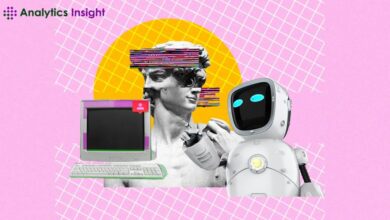Apple now offers a complete AI ecosystem – Computerworld

When you think back to the heady days of last week, it’s hard to ignore that the introduction of Apple Intelligence on Monday now means the company formerly known as “behind on AI” just overtook Microsoft to bring home the world’s biggest and most trusted platform for generative AI (genAI).
The reason it’s hard to ignore is because it is true. Sure, Microsoft Copilot does lots of things already and once you can actually spend cash on Surface devices that run Copilot, Microsoft will be a powerful AI platform. But Apple will be, too. (You can understand why Microsoft was unhappy about Apple’s deal with OpenAI.)
Mac, mobile, tablet, cloud
But I’d argue that Apple might be more powerful, because Apple Intelligence (the name Apple has given its own genAI models, served up both on device and in the cloud) will run on PCs (Macs), tablets, and mobile devices.
I imagine it will in the future be supported on visionOS, and suspect it is only a viable usage case away from running on any other Apple device equipped with a capable processor.
Millions of users on day one
Once Apple Intelligence is released, it will be available on hundreds of millions of devices on day one. Those devices won’t need to be new, either — those are the ones that are already being used. Apple says any Mac or iPad running an M1 or later chip will run it. It also says any iPhone 15 Pro series model will be able to handle it.
That’s a huge market, and no one needs to spend a dime to get into it. Those who do plan to upgrade or want to invest in exploring what’s available have plenty to look forward to on the journey to fall when the upgrade ships.
After all, if you squint, you can just about see M4 Macs appearing at the top of that nearby hill now the iPad Pro has that chip. We also think new iPhones are very likely to be already rolling off production lines, and both the iPad Air and iPad Pro already host compatible chips. So, if you’re in the market for new hardware, it’s on the way, but tens of millions of people won’t need to upgrade to try Apple’s new genAI shiny.
Competitors are gasping
When it comes to Apple Silicon — the fire horse on which AI rides in the newly rebirthed Apple universe — take note that it has taken competitors, even those working with Arm reference designs, literally years to even begin to catch up with the computational power and energy efficiency Apple’s designers achieved.
With a road map to M4 and beyond already in place, Apple is quite evidently telling us that when it comes to processors the speed argument is done, dusted, and won. And don’t get me started on privacy after the Microsoft Recall farce.
The power of consent
We can see Apple becoming the world’s leading provider of genAI-wielding devices for the mass market. Not only that, but because it is building a system that is private by design, consumers get the best of both worlds: complete data privacy for some tasks and the option of using AI from other vendors for other tasks, if they choose to do so.
That’s an alluring combination of privacy and consent, and that choice — that sense of personal AI-boosted empowerment — is coming to literally hundreds of millions of devices in real time. (Though that number is dented by the fact that we believe only US devices will get these features in the first draft, which is a shame.)
Consumers don’t have to use AI, but they will be happy that they can.
But it’s also about making
Apple Intelligence can handle a huge number of tasks. Boosted by developers working with their own AI models and App Intents, the number of tasks it can do will only grow.
I mentioned that developers will be able to use their own AI models in apps. What do you think they will build those models on? Well, they are Apple developers and will very likely build them using a Mac.
That won’t just be because you need a Mac to build Apple apps, but also part because the M-series chips inside Apple’s computers demonstrate excellent training performance using most AI training tools. That’s why developers building AI models for other platforms also use Macs.
Now, I don’t know if the MacBook Pro is the most popular system on which to build AI models among data scientists — you have to be cautious about cause and effect — but I think it’s probably close.
Controlling the means of production
You see, Apple doesn’t just build fantastic machines to build AI models on, but now also offers a vast global ecosystem of devices on which to run those AI models.
Ever since the genAI bubble blew up, Apple has flexed its innovative power to jump from somewhere at the back to head of the pack when it comes to the technology. It is not the first time it has made a leap like that — it didn’t build the first music player, smart mobile device, netbook (it skipped them for tablets), or music streaming service, either.
But despite the impressive way in which Apple has jumped from zero to hero, the inconvenient question remains: Are humans ready for AI and the gigantic leaps in machine intelligence it will bring? Particularly when you look ahead to when we will run AI on quantum processors, as we eventually will — what have we unleashed?
Please follow me on Mastodon, or join me in the AppleHolic’s bar & grill and Apple Discussions groups on MeWe.



